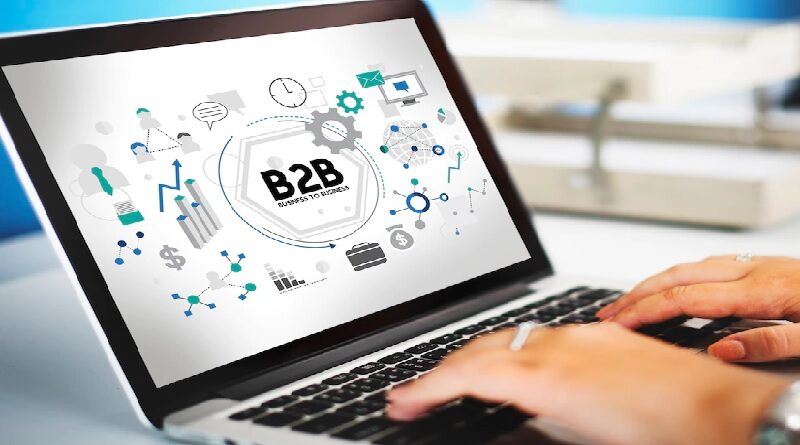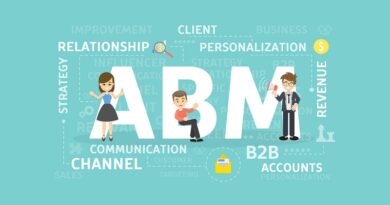Key Emerging B2B Technology Trends To Support ABM in 2023
New tech platforms arise to assist in organising and implementing strategic efforts as new approaches in B2B marketing and ABM are developed to address its specific issues. The criteria to assess ABM platform suppliers in 2023 are covered by Carolyn Barrs, consultant at Merkle Technology Strategy, along with some trends driving B2B martech and a few new technologies.
Business-to-business (B2B) marketing faces particular difficulties, such as protracted purchasing cycles and the requirement for cross-functional coordination. Over the years, numerous marketing tactics have been created and improved in an effort to address these particular challenges. As new approaches become more prevalent, technology platforms appear to aid in planning and carrying out strategic initiatives.
Let’s examine some developing technologies that are powering ABM and buyer group marketing as well as some trends that are influencing marketing technology (martech).
Strategic Trends Influencing B2B Marketing Technology Think and orchestrate at the account level
Account-based marketing (ABM) and account-based experience (ABX) may have many names over the years, but they all refer to the same fundamental idea: identifying, prioritising, and engaging with your high-value customers. Although the idea is by no means new, the way that ABM is being implemented has changed and grown to include an account-based experience. In order to successfully integrate marketing and sales initiatives such as data management, journey orchestration, analytics, account planning, content personalization, offer management, and customer success, ABX requires cross-functional alignment. The alignment of these crucial business areas under an ABM strategy will provide a consistent, tailored client experience and eventually increase conversion.
The evolution of account-based methodologies: Buyer groups
For decades, we have heard the same old refrain: sales and marketing disagree and talk over each other (sometimes even unknowingly duplicating efforts). Sales is more concerned with money and may not be particularly interested in the sheer volume of leads created, whereas marketing frequently mentions qualified prospects as their major performance measure. Why does this gap continue? Sales may believe that leads from marketing are not worthwhile to pursue because there is a lack of meaningful opportunity data, even if marketing may be generating leads. The sales team is frequently aware that multiple buyers are involved in an account’s purchasing decision, thus pursuing a single lead blindly could be pointless. This misalignment has led to the development of a technique to guarantee that marketing efforts are concentrated on buying groups within an account that are prepared for conversion. According to a survey by Forrester, groups of four or more buyers made 63% of B2B purchases in 2021.
B2B marketers may not be surprised by this; many have long recognised the benefits of this strategy. The move in focus to an account’s buying groups has, however, historically been hampered by a lack of technological and procedural skills. Fortunately, marketing technology has improved to satisfy this demand.
Emerging Technologies Driving Account-Based and Buyer Group Marketing
Marketing automation solutions, which provide a comprehensive variety of capabilities meant to support a wide range of marketing initiatives, largely control the B2B martech market share. The choice of when and how to implement an ABM approach is frequently left up to marketers. Having said that, a lot of the current software behemoths, like Salesforce and Adobe, have taken steps to establish themselves as platforms that can meet ABM’s needs. For instance, Salesforce rebranded Pardot, its B2B marketing automation software, to Marketing Cloud Account Engagement earlier this year. Marketers can use artificial intelligence to identify the purchasers within an account and rank target accounts by leveraging Salesforce Einstein. Similar core ABM features, like propensity modelling, AI-driven account lists, and account-driven personalisation, are enabled by Adobe’s Marketo Engage.
Software-as-a-service (SaaS) systems with an emphasis on ABM execution have emerged in recent years. Demandbase, 6sense, and Terminus have all been named as ABM technology leaders by Gartner. These systems include a wide range of features and provide an all-in-one solution to ABM strategy. These systems’ main goals are to find profitable accounts, improve account knowledge to facilitate sales efforts, promote a consistent and tailored customer experience, and provide account-driven performance analytics.
- ABM Technology Key Capabilities
With an account-centered approach, ABM solutions make it possible to perform functions including data unification, segmentation, predictive analytics, cross-channel journey orchestration, measurement, and reporting. Furthermore, these specialist technologies make it possible to locate and target an account’s buying committee.
In order to enrich CRM data and simultaneously improve ABM predictive modelling by ingesting sales activity data, ABM systems frequently work in conjunction with existing technology investments by forming integration relationships with CRM platforms like Salesforce Sales Cloud.
- Criteria To Evaluate ABM Vendors
When evaluating ABM platforms, seek out vendors that offer the following capabilities to support marketing efforts:
Account-based intelligence:
- Proprietary data: Leverages proprietary firmographic, intent, and behavioral data to enrich the account database. Access to technographic proprietary data will also be critical for the B2B technology vertical.
- Account identity: Identifies accounts (and buyers) following anonymous website activity. Proprietary IP and cookie data are often utilized to identify visitors.
- Account analytics: Automates the ability to prioritize high-value accounts that closely fit the ideal customer profile. AI-driven propensity and fit analytics are leveraged to meet this objective.
Buyer committees:
identifies account-targeted persons based on their propensity to be purchase stakeholders. Data on intent is frequently used to estimate this probability.
ABX engagement:
individualised content and journey orchestration depending on account segmentation. Experiences can also be tailored for different customer demographics.
When assessing ABM companies, integration relationships should be one of the main factors. Platforms for marketing automation, CRM, and analytics can all be connected with ABM technology. Numerous integration relationships with Salesforce, Adobe, Google, and Amazon technologies are offered by vendors like Demandbase.
As a last point, it is important to remember that ABM and ABX are not just a collection of features that can be conveniently bundled into one platform. These tactics indicate a bigger attitude, a company-wide strategy that ought to permeate every element of your CX technology stack.




